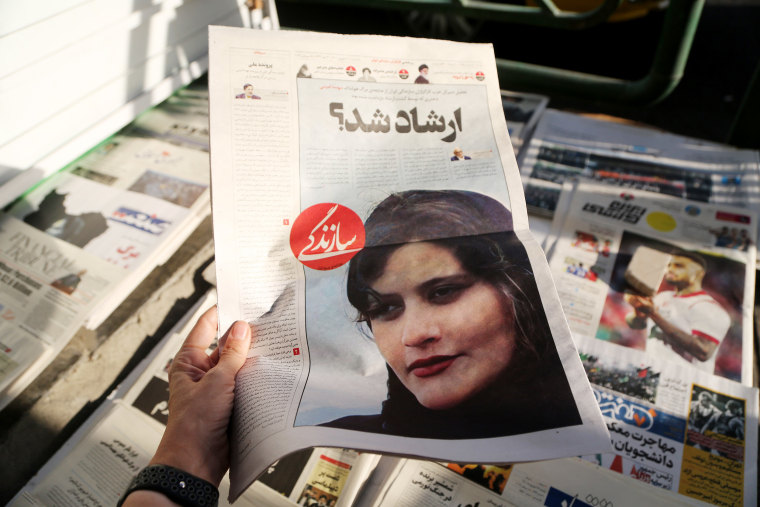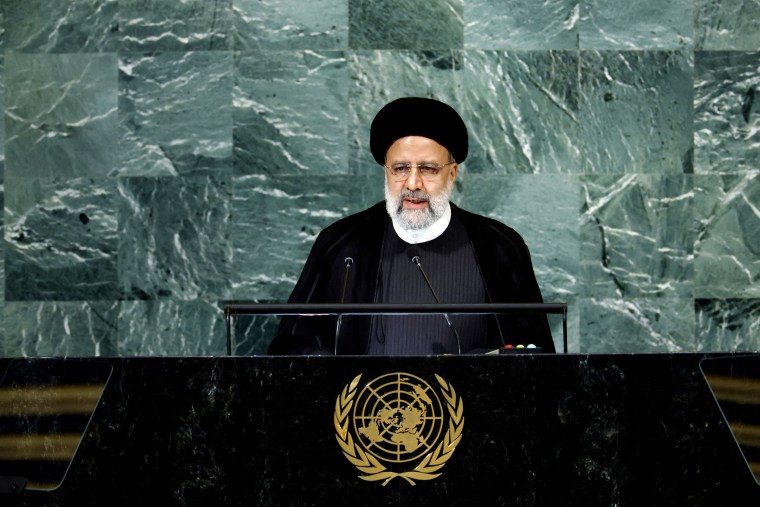The protests in Iran aren’t just about Mahsa Amini, but all women
Iran #Iran

In my early 20s, with the wild, uncertain hope that the country of my birth held something for me, I moved to Iran from Los Angeles two decades after my family fled the rise of the Islamic theocracy in the 1980s. The apartment where I lived in Tehran sat beside a mosque. From my window, I could see its rooftop and the gilded dome. On religious holidays, the mosque would festoon the streets with stringed light bulbs, and believers would gather to worship.
One such afternoon, on the anniversary of the death of the prophet Mohammed’s daughter Fatima, after the commemoration ceremony had commenced and the voice of a man singing the praises of Fatima’s virtues was met by followers beating their chests, I heard a girl screaming in the streets below. Her voice carried above the percussion of chest-beating through my open window.
The year I spent in Iran, young and wild and hopeful, I lived in the shadow of fear.
I didn’t want to register that sound. I was expecting a friend for lunch and, busy with preparations, I told myself it was just a girl laughing in the street. She must be playing a game. Tag, perhaps, given how raucous her cries were. The doorbell rang and I opened it to find my friend, trembling, pale, leaning against the frame for support. “The police outside,” she whispered, “they’re beating a girl in the streets.”
A month later, that same Iranian friend was arrested at a party with 12 other young adults for the crime of socializing with boys. She was detained for three days. I paid her a visit during her convalescence. Her eyes bruised, a large purple bump on her head, she refused to talk about what had happened to her in those three days. We sat together in silence as I held her.
After the death last week of Mahsa Amini while in police custody for violating hijab laws, Brig. Gen. Hossein Rahimi, the head of the Tehran Police, immediately denied the use of physical violence during her arrest or detention. He called the allegations “cowardly” and claimed that she had had health problems. Her family has denied this, attesting that she was in perfect health.
 An Iranian newspaper in Tehran with a photo of 22-year-old Mahsa Amini, who died after being arrested by morality police, allegedly for not complying with the strict dress code.Fatemeh Bahrami / Anadolu Agency via Getty Images
An Iranian newspaper in Tehran with a photo of 22-year-old Mahsa Amini, who died after being arrested by morality police, allegedly for not complying with the strict dress code.Fatemeh Bahrami / Anadolu Agency via Getty Images
The Guardian reported that preliminary CT scans of Amini’s head revealed a bone fracture, hemorrhage and brain edema. But those who have lived under the Iranian regime don’t need forensic evidence. They know the terror women face, physically and psychologically, every day. It is so common that everyone has either experienced it firsthand or knows someone close who has. The Iranians risking their lives by taking to the streets are there to protest not only Amini’s death, but the threatened death all women face daily.
The year I spent in Iran, young and wild and hopeful, I lived in the shadow of fear. Every party I attended, every date I went on, every time I left the house, met a friend, took a trip, listened to music, danced, swam in the sea, rode a bike, it was a negotiation between the threat of potential violence at the hands of the law and the urgency to be alive, to exist, to be happy.
On the third day of my homecoming, I had my first direct experience with the police in Iran. I was on my way to play tennis with a cousin. In those early days of my return, I was so terrified of the police that I followed the strictest version of the hijab laws. But before I reached the tennis courts, a group of women in black chadors surrounded me, demanding to know why I was dressed so indecently.
My trespass? I was not wearing socks with my tennis shoes and a fraction of my ankle was visible beneath the hem of my full-length skirt. They escorted me to the police station, where I was led into a stifling room to see a man in uniform behind a heavy, somber desk. He questioned me for 20 minutes.
When he learned that I was raised in Los Angeles, he attributed my indecency to the waywardness of my American upbringing. He lectured me about the importance of modesty before finally giving me permission to leave with just a warning. I was spared the experience of physical violence, but he did take something from me. My head lowered, my voice muted, shamed and cowed by a man who had the power to do anything he wanted to my body, I apologized, even when every atom in me screamed with rage at the indignity. I kept silent, looked at my feet and thanked him for his mercy.
Countless others have not been so lucky. Footage of other Iranians shows three grown men attacking a young woman on the side of a road. She falls to the asphalt, her head hitting the side of the police car before two policemen pull her up and shove her into the back. Another young woman at a park screams in terror for her mother as an older woman tries unsuccessfully to pull her out of the clutches of several policemen. When police lift another young woman resisting arrest by her arms and legs to throw her into a white van, a female official grabs the girl by the hair to assist, the young woman’s head hitting the door multiple times.
 Iranian President Ebrahim Raisi delivers remarks at the 77th session of the United Nations General Assembly (UNGA) at U.N. headquarters on Wednesday in New York City.Anna Moneymaker / Getty Images
Iranian President Ebrahim Raisi delivers remarks at the 77th session of the United Nations General Assembly (UNGA) at U.N. headquarters on Wednesday in New York City.Anna Moneymaker / Getty Images
Before his scheduled trip to New York to speak Wednesday at the opening of the U.N. General Assembly, Iranian President Ebrahim Raisi called Amini’s family with his condolences and claimed that she, and all Iranian girls, are like his own daughter, vowing to pursue the incident. Tell me, President Raisi, is this how you treat your daughters?
Amini, the young women who was videotaped being violently arrested, the girl who screamed for help beneath my apartment window, my friend who was beaten in police custody — these are not isolated incidents, accidental mishaps at the hands of a benevolent police force with the sole intention of protecting the social good.
When the prominent human rights lawyer Nasrin Sotoudeh was sentenced to 38 years in prison and 148 lashes of a whip for representing women who protest Iran’s hijab laws, the courts were not punishing a dangerous criminal. The forced confessions of the writer, artist and activist Sepideh Rashno, who appeared on state television visibly beaten after her arrest and detention, did not make Iran safer from savage brutality.
Iran’s violence against women is systematic, intentionally designed by a government that, under the guise of religious piety, uses this violence to demoralize and control a tired, hungry and desperate people. A month before Amini’s death, Raisi issued an order to increase the restrictions on and enforcements of women’s hijab and chastity in Iran. Soon, the government intends to use facial recognition technology to identify women on public transportation who do not comply with these stricter laws.
The European Union stated that Amini’s death is “unacceptable and the perpetrators of this killing must be held accountable.” U.S. Special Envoy for Iran Robert Malley said that “those responsible for her death should be held accountable.” U.S. Secretary of State Antony Blinken advised the Iranian government “to end its systemic persecution of women and to allow peaceful protest.” Nada Al-Nashif, the acting high commissioner for human rights at the United Nations, asked for independent investigations.
And yet, Raisi was welcomed in New York at the U.N. while his police reportedly open fire on crowds protesting an innocent girl’s death. As Raisi spoke to the assembly, the government of Iran continued to disrupt internet connectivity to silence people who want to organize and communicate.
In this silence, as it has in the past, the government commits atrocities. Yet the U.N. listened to Raisi talk about nuclear capabilities and human rights. Who in that audience of delegates, heads of states and dignitaries stood up and held him accountable for his abuses against the daughters of Iran? Who among them will listen, past Raisi’s empty promises, to their screams?